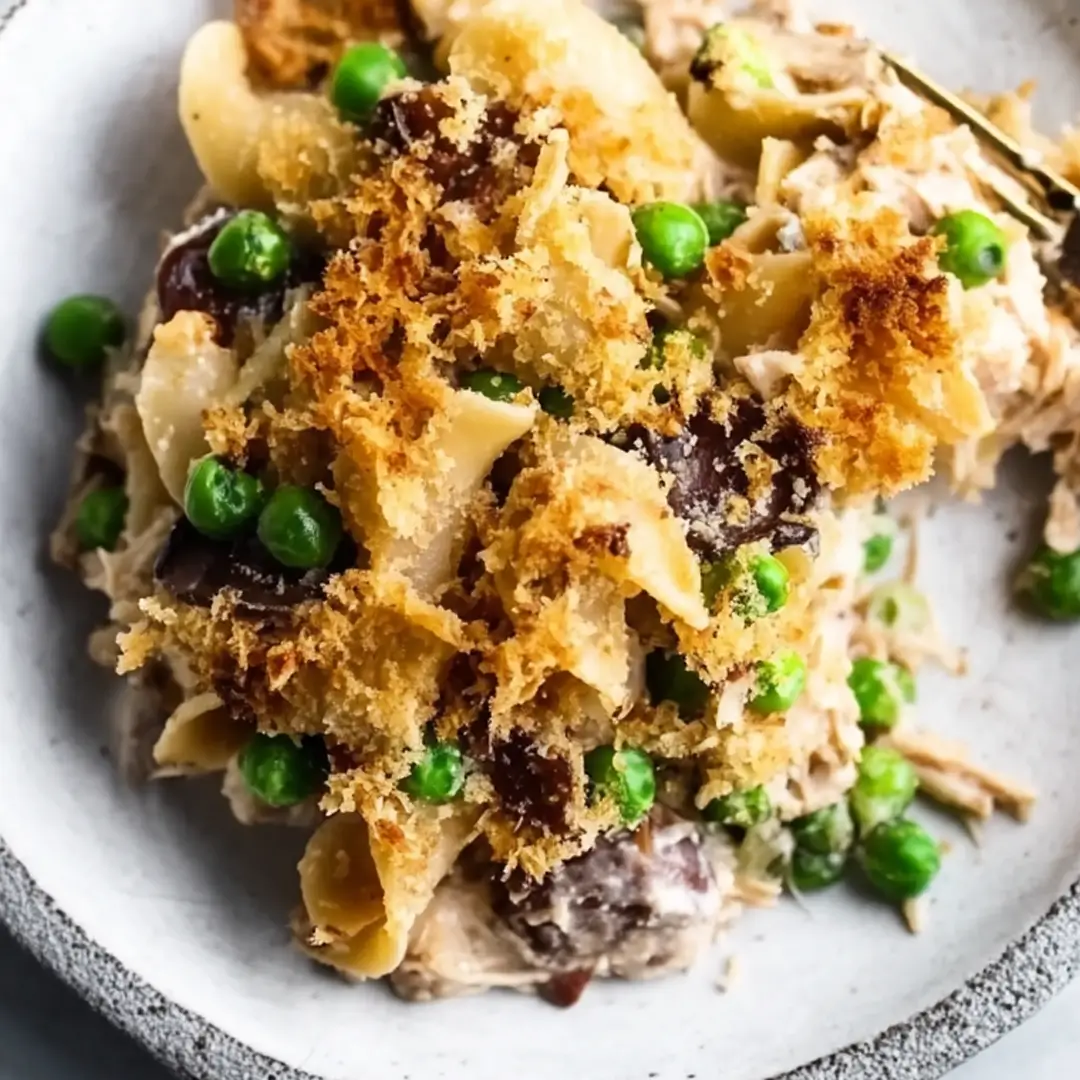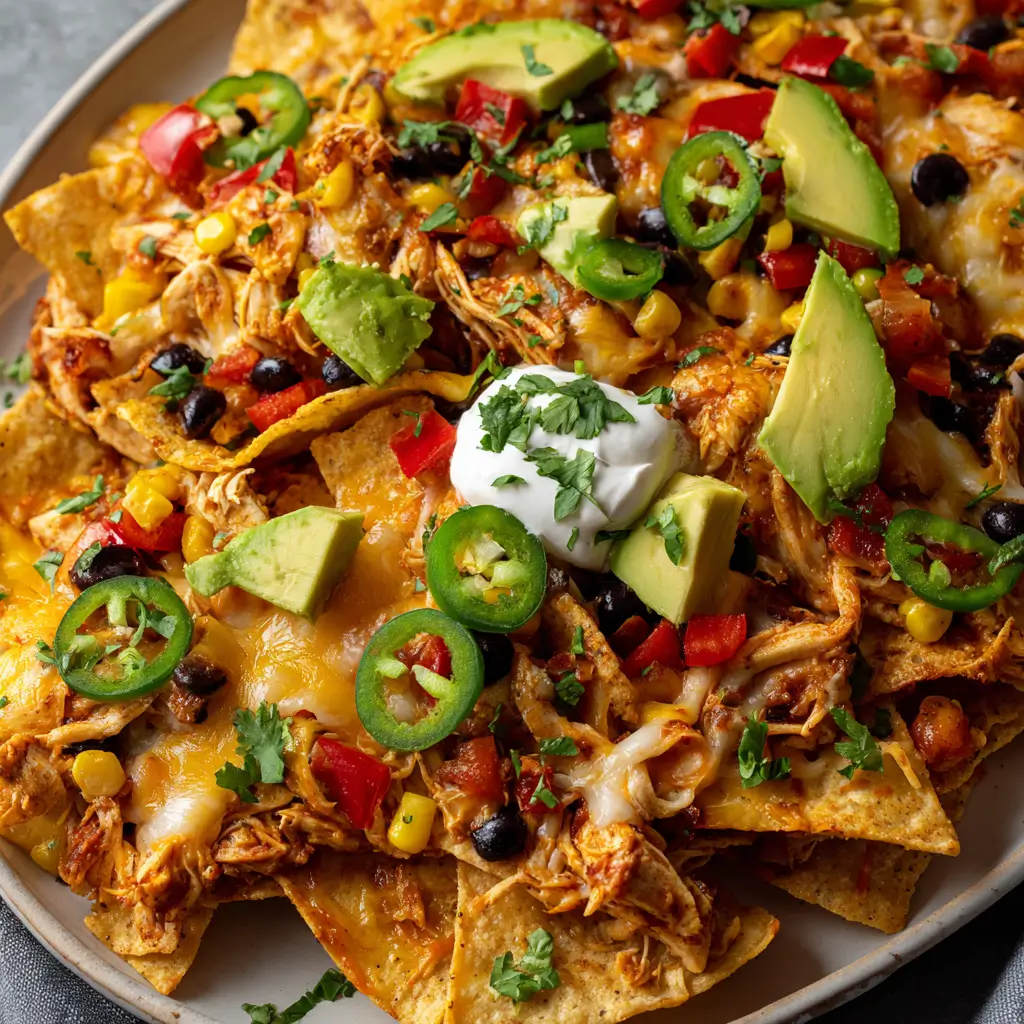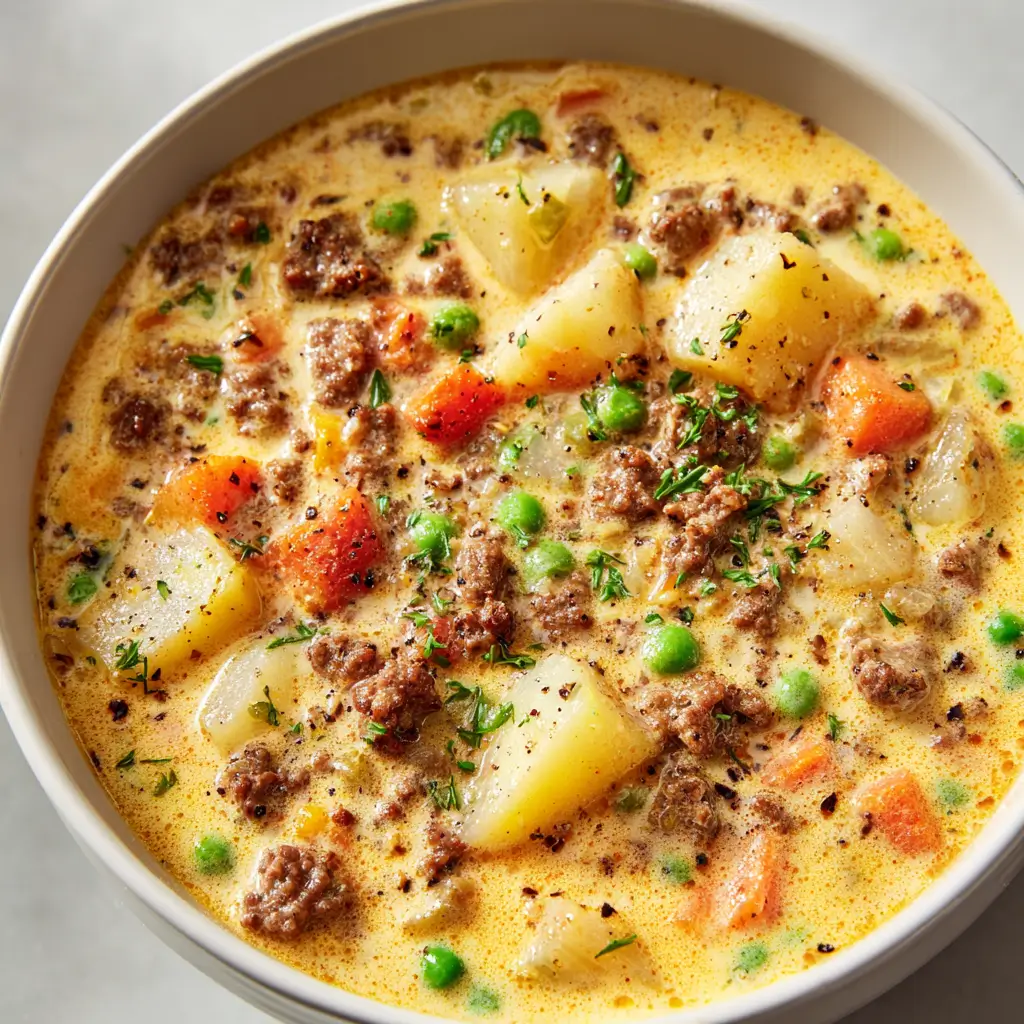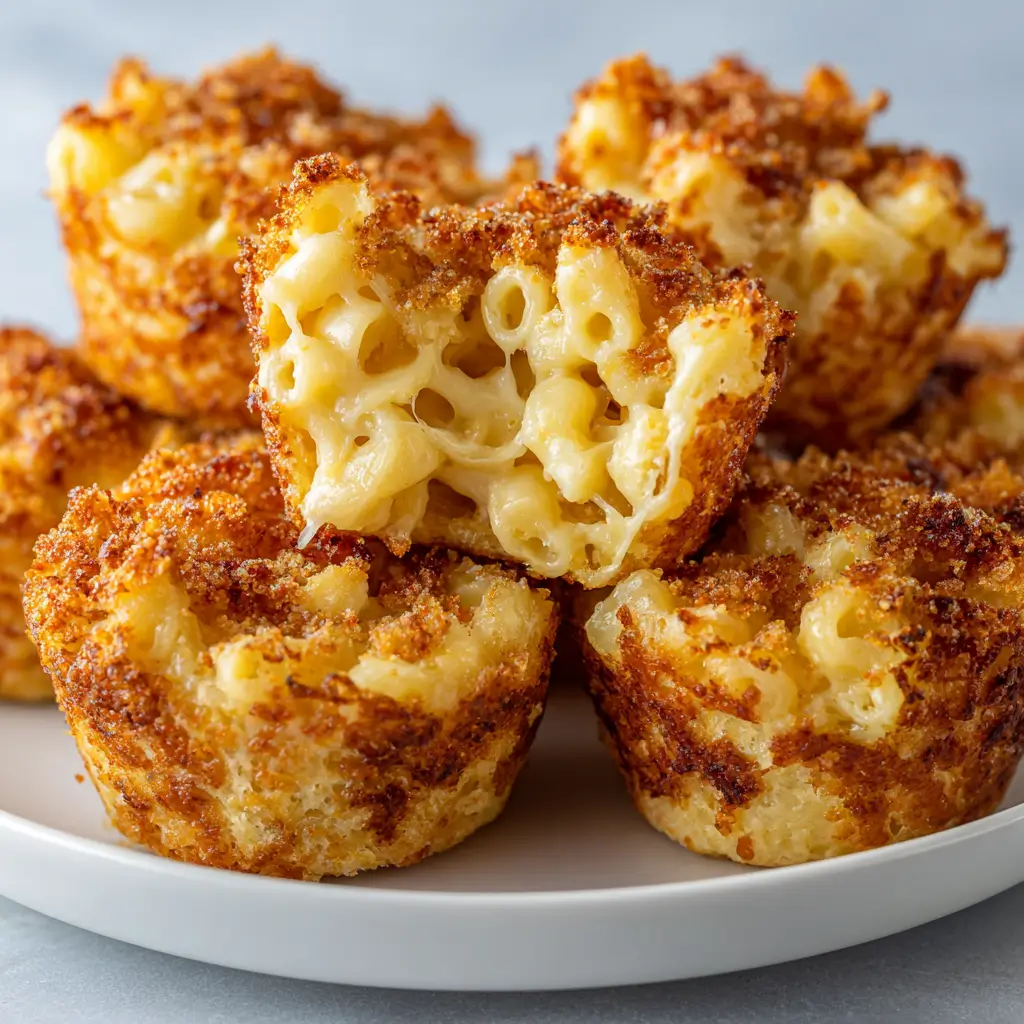Healthy tuna noodle casserole is a lighter take on a classic comfort food. It combines tender whole wheat noodles, lean tuna, and a creamy, flavorful sauce all baked together into one satisfying dish. It’s balanced, easy to make, and works well for both weeknight dinners and meal prep.
What I like most about this version is how it manages to stay creamy without being heavy. By using Greek yogurt and a few smart swaps, you still get that familiar, cozy texture without the extra fat or calories. The flavor is mild but comforting, and it’s easy to build on whether you’re adding vegetables, changing up the cheese, or making it gluten-free.
It also holds up well as leftovers, which is always a bonus. Over time, this recipe has become one of those go-to meals I return to when I want something easy, wholesome, and satisfying without needing a long list of ingredients or steps.
Key Ingredients
A great healthy tuna noodle casserole starts with smart swaps and balanced ingredients. The goal here is to maintain the creamy, cozy feel of the original dish just without all the extra fat, sodium, or processed fillers. What you use matters, and it’s often the simple tweaks that make all the difference.
Core Ingredients
Let’s start with the basics the stuff you really can’t skip if you want the casserole to hit all the right notes.
-
Canned Tuna in Water: Go for wild-caught, sustainably sourced tuna when possible. Packed in water, it’s lighter and less greasy than oil-packed versions.
-
Whole Wheat Egg Noodles: These hold up well in baking and add a mild nuttiness while giving a fiber and protein boost over traditional pasta.
-
Plain Greek Yogurt: This is my go-to base for the creamy sauce. It’s thick, tangy, and much lower in fat than heavy cream or mayo.
-
Low-Fat Milk or Unsweetened Almond Milk: Both blend beautifully with the yogurt to create a rich, pourable sauce.
-
Frozen Peas and Carrots: Classic additions for texture, color, and a little sweetness.
-
Shredded Cheese (like sharp cheddar): Just a touch adds richness. Sharp varieties offer more flavor, meaning you can use less.
-
Whole Grain Breadcrumbs: For a crunchy, toasty topping without refined carbs.
-
Peas: These bring a pop of color, subtle sweetness, and a bit of extra fiber to each bite. Frozen peas work great and require minimal prep.
Optional Additions
Once you’ve got the essentials down, you can layer in extra flavor and nutrients based on what you’ve got on hand.
-
Chopped Spinach or Kale: Stir in for extra iron and color.
-
Celery, Bell Pepper, or Mushrooms: Sauté first for better texture and flavor.
-
White Beans or Cottage Cheese: Boost protein without affecting flavor.
-
Lemon Zest, Dijon Mustard, or Garlic Powder: A pinch of one or two can seriously enhance the depth of flavor.
How to Make the Healthy Tuna Noodle Casserole
Once your ingredients are prepped, it’s time to bring your healthy tuna noodle casserole to life. The key is layering textures and flavors so it doesn’t just taste “light” it tastes like a dish you’ll crave.
Step 1: Cook the Noodles
Boil your noodles just until al dente. This is important because they’ll finish cooking in the oven, and overcooked pasta turns to mush in a casserole. Drain and rinse briefly with cool water to stop the cooking process.
Step 2: Sauté the Veggies
In a large non-stick skillet, lightly sauté your veggies of choice (peas, carrots, mushrooms, or bell peppers) in a splash of olive oil or broth. This step brings out their sweetness and keeps them from turning soggy in the oven.
Step 3: Make the Sauce
In a mixing bowl, whisk together Greek yogurt, milk, shredded cheese, garlic powder, salt, and pepper. If you’re feeling adventurous, add a spoonful of Dijon mustard or lemon juice to brighten the flavor. The consistency should be creamy, not runny.
Step 4: Combine Everything
In a large bowl, gently mix the cooked noodles, tuna, sautéed veggies, and sauce until well combined. Avoid overmixing, which can break the noodles or make the tuna mushy.
Step 5: Assemble and Bake
Pour the mixture into a lightly greased baking dish. Sprinkle the top with breadcrumbs and a light handful of cheese. Bake at 375°F (190°C) for 20–25 minutes until golden and bubbly. If you love a crunchy top, switch to broil for the last 2–3 minutes.
Variations of Healthy Tuna Noodle Casserole
What makes this recipe so practical is how easy it is to switch things up. Whether you’re gluten-free, dairy-free, or simply bored of the same old flavors, there’s a version of healthy tuna noodle casserole for you. These ideas come straight from tweaks I’ve made for friends and family and they all work beautifully.
Low-Carb or Grain-Free
Swap the noodles for cooked spaghetti squash or zucchini noodles. These veggie-based substitutes lighten the dish significantly while still soaking up all that creamy goodness. Just make sure to remove excess water from them before mixing in, or your casserole could turn soupy.
Gluten-Free Friendly
Use certified gluten-free pasta and breadcrumbs. Brown rice pasta or chickpea-based noodles hold up well in baking and add a nice texture. A mix of crushed gluten-free crackers can also make a great topping alternative.
Dairy-Free & Vegan Option
To skip the dairy, go with unsweetened almond or oat milk, and replace Greek yogurt with a plain, unsweetened non-dairy yogurt. Vegan cheese melts better than it used to and can still offer that melty layer on top. Just watch your salt levels some plant-based ingredients are more sodium-heavy.
Kid-Friendly Twist
If your little ones are picky about veggies, blend some cooked carrots or spinach into the sauce. You’ll get the nutrients without the complaints. And using fun-shaped pasta can make the dish more exciting for them.
Puree veggies into the sauce and use fun pasta shapes. This method also works well in this Chicken Veggie Casserole, if you want to sneak in more greens.
Protein-Boosted
Mix in cottage cheese or cooked white beans. It’s a subtle way to raise the protein content without drastically changing the flavor. This version is great for post-workout meals or growing teens who need the extra fuel.
How to Serve Healthy Tuna Noodle Casserole
Serving your healthy tuna noodle casserole is just as important as making it. While it’s easy enough to dish out straight from the pan, a few small touches can elevate it from everyday dinner to something you’ll be proud to put on the table. After all, presentation and pairing can turn a simple casserole into a well-rounded, memorable meal.
Pair It with Fresh Sides
Because this casserole is rich and creamy, it benefits from being served alongside something fresh and crisp. A basic green salad with lemon vinaigrette or steamed broccoli works really well. These light sides add contrast and balance the richness of the tuna and cheese.
Craving a little crunch? Try pairing it with cucumber slices or a chopped veggie mix. Even a small side of coleslaw (minus the mayo-heavy dressing) can complement the texture beautifully.
Serve with a crisp green salad or something refreshing like this Viral Cucumber Salad. The contrast makes the dish feel even more balanced.
Serve in Individual Portions or Family-Style
For weeknight dinners, scoop it right from the baking dish onto plates or shallow bowls. It holds its shape well once cooled slightly, so it’s easy to portion out. If you’re serving guests or want to make it look more refined, use ramekins to bake individual servings. They’re fun, tidy, and great for portion control.
When prepping lunches for the week, divide the casserole into airtight containers after baking. It reheats quickly in the microwave and stays flavorful even a few days later.
Common Mistakes & Fixes
Making a healthy tuna noodle casserole can seem easy, but there are a few common mistakes that can trip you up especially if you’re trying it for the first time or using ingredient swaps. Thankfully, most issues are quick to fix once you know what to look for.
Dry or Overcooked Casserole
This one’s all too common. If your casserole comes out dry, chances are your sauce-to-noodle ratio was too low, or the noodles absorbed too much liquid while baking. Always use enough creamy base, and remember that pasta continues to soak up moisture after cooking.
Fix: Add a splash of milk or broth before baking if it looks dry, and don’t skip resting it after cooking this helps moisture settle evenly.
Soggy or Mushy Texture
Overcooked noodles and too much liquid can result in a mushy mess. Remember, al dente is your friend. If you’re using frozen veggies, always sauté or steam them first to remove excess water.
Fix: Slightly undercook your pasta before combining. Pre-cook veggies to remove moisture and give structure.
Bland Flavor
Even healthy dishes should taste good. Tuna and yogurt can both be a little flat without help, so season generously. Herbs like dill, parsley, or thyme, along with garlic powder and a dash of mustard, can really lift the flavor.
Fix: Always taste your sauce before baking. Add more seasoning, acidity (like lemon juice), or cheese if needed.
Uneven Browning
Want that irresistible golden crust? A cold oven or low cheese content can prevent the top from browning well. Also, too much sauce on top can stop breadcrumbs from crisping.
Fix: Bake uncovered and use a hot oven (375°F). For extra crunch, broil the casserole for 2–3 minutes at the end.
FAQs
Even with a straightforward recipe like healthy tuna noodle casserole, there are always a few common questions that pop up. Below, I’ve answered some of the ones I’ve received most often from friends and readers. These quick insights can save you time and help you make the most out of each batch.
What kind of tuna is best for this casserole?
Stick with chunk light tuna in water. It’s lean, mild in flavor, and blends easily into the casserole. Albacore works too, but it can have a stronger taste and firmer texture. If you’re after something subtle and less “fishy,” chunk light is your best bet.
Can I make this dish ahead of time?
Absolutely. I often prep it the night before, cover it tightly, and refrigerate. Before baking, let it sit at room temperature for 20 minutes and stir in a bit of milk if the mixture looks dry. This helps revive the creaminess and keeps everything moist during baking.
How long does healthy tuna noodle casserole keep in the fridge?
It stays fresh for up to four days when stored in an airtight container. Reheat it in the microwave or oven until warmed through. If reheating from frozen, let it thaw in the fridge overnight before warming up.
Can I freeze the casserole?
Yes, and it freezes surprisingly well. I recommend freezing it before baking if you can this way the topping stays crisp when cooked fresh. Wrap the baking dish tightly in foil and use within 2–3 months for best quality.
Can I swap the noodles with something else?
Sure. Whole wheat pasta is my top pick, but high-protein chickpea pasta or gluten-free brown rice noodles also work well. Just avoid overcooking before baking, or they might fall apart.
Print
Healthy tuna noodle casserole
- Total Time: 35 minutes
- Yield: 6 servings 1x
Description
This Healthy Tuna Noodle Casserole is a lighter, nutritious twist on the comforting classic. It’s made with whole wheat noodles, lean tuna, creamy Greek yogurt, and a blend of colorful vegetables like peas and carrots all baked to golden perfection. With smart ingredient swaps and minimal prep, this dish is perfect for cozy weeknight dinners, meal prep, or feeding a hungry crowd without sacrificing flavor or balance.
Ingredients
Core Ingredients
2 cups whole wheat egg noodles (uncooked)
2 cans (5 oz each) tuna in water, drained
1 cup plain Greek yogurt
½ cup low-fat milk or unsweetened almond milk
1 cup frozen peas and carrots, thawed
½ cup frozen peas (additional)
½ cup shredded sharp cheddar cheese
¼ teaspoon garlic powder
Salt and pepper, to taste
⅓ cup whole grain breadcrumbs
Optional Additions
1 cup chopped spinach or kale
½ cup sautéed mushrooms, celery, or bell peppers
½ cup cooked white beans or cottage cheese
1 teaspoon Dijon mustard or lemon zest
Instructions
-
Cook the Noodles
Boil the noodles in salted water just until al dente, about 6–7 minutes. Drain and rinse with cool water to stop the cooking process. -
Sauté the Veggies
In a non-stick skillet, lightly sauté any fresh vegetables (like mushrooms or bell peppers) in a small amount of olive oil or broth until softened. Skip this step if only using thawed frozen peas and carrots. -
Make the Sauce
In a mixing bowl, whisk together Greek yogurt, milk, shredded cheese, garlic powder, salt, and pepper. Stir in Dijon mustard or lemon juice if using. The sauce should be creamy and pourable. -
Combine Everything
In a large bowl, gently combine cooked noodles, tuna, peas, carrots, any sautéed veggies, and the prepared sauce. Stir until everything is evenly coated. -
Assemble and Bake
Transfer the mixture to a lightly greased 9×13-inch baking dish. Sprinkle breadcrumbs and a little extra cheese on top. Bake at 375°F (190°C) for 20–25 minutes, or until the top is golden and the casserole is bubbling. Broil for 2–3 minutes at the end for a crispy topping.
Notes
For extra protein, stir in white beans or cottage cheese.
Use chickpea or brown rice pasta and gluten-free breadcrumbs for a gluten-free version.
To make it dairy-free, sub in unsweetened plant-based yogurt and cheese.
This casserole holds up great for meal prep portion it out for easy lunches.
Add lemon zest or fresh herbs like parsley for brightness.
- Prep Time: 10 minutes
- Cook Time: 25 minutes
- Category: Dinner
- Method: Baked
- Cuisine: American
Nutrition
- Serving Size: 1 serving
- Calories: 310
- Sugar: 5g
- Sodium: 480mg
- Fat: 9g
- Saturated Fat: 3g
- Unsaturated Fat: 5g
- Carbohydrates: 32g
- Fiber: 4g
- Protein: 25g
- Cholesterol: 35mg
Keywords: healthy tuna casserole, greek yogurt tuna bake, light tuna noodle casserole, whole wheat noodle casserole, tuna pasta bake, creamy tuna casserole, easy dinner, high protein casserole




